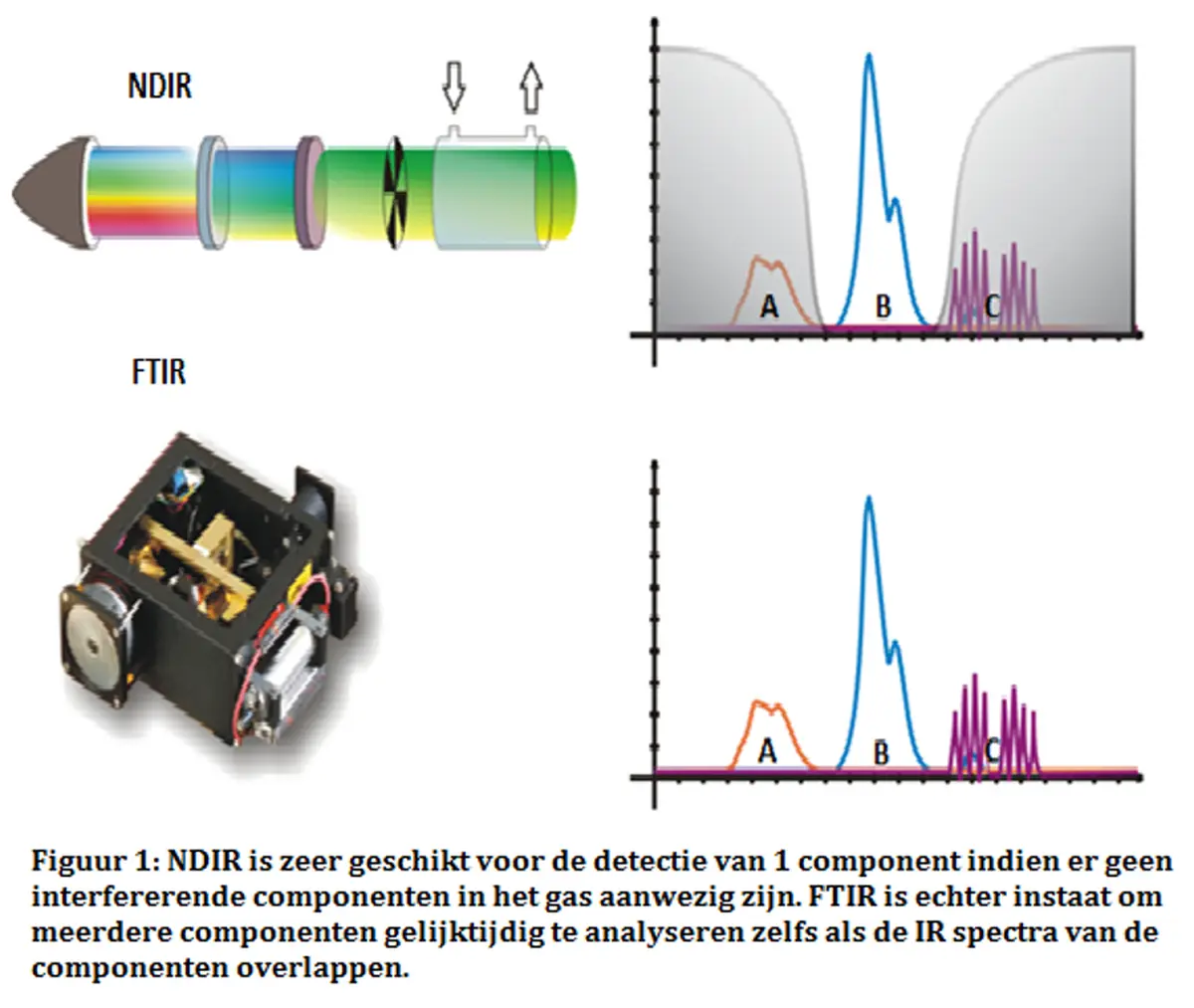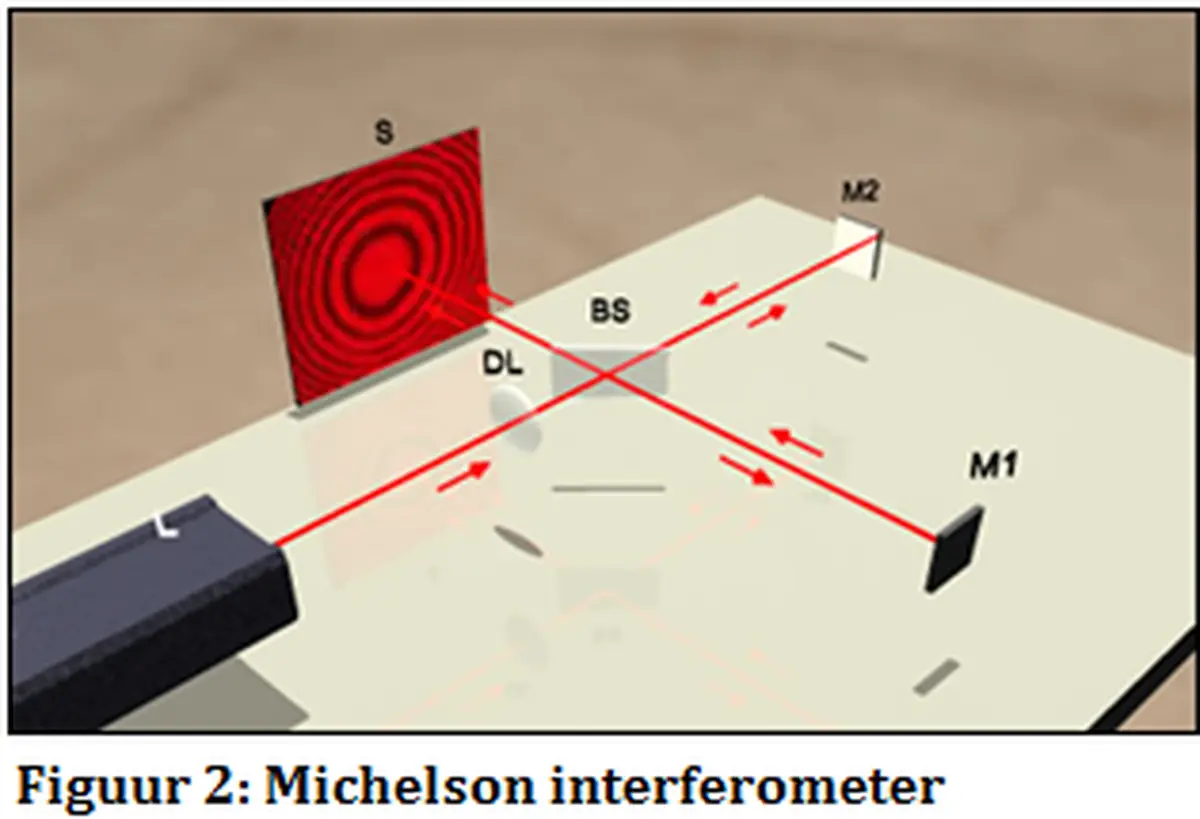FTIR Operating Principle
How an FTIR Works
 Molecules with a sufficiently large dipole moment absorb infrared light. The absorbed energy is converted into movement between the atoms within the molecule. The degree of absorption depends on the atoms in the molecule and the type of chemical bond. Depending on the molecule, there are multiple frequencies in the infrared spectrum where energy absorption occurs. If multiple components are present in the gas mixture (both known and unknown), Fourier Transform Infrared (FTIR) is a highly accurate technique for identifying and quantifying all IR-absorbing components. The software in our Gasmet FTIR analyzers is capable of analyzing up to 50 components in real time. In contrast, NDIR looks at a single wavelength (see Figure 1).
Molecules with a sufficiently large dipole moment absorb infrared light. The absorbed energy is converted into movement between the atoms within the molecule. The degree of absorption depends on the atoms in the molecule and the type of chemical bond. Depending on the molecule, there are multiple frequencies in the infrared spectrum where energy absorption occurs. If multiple components are present in the gas mixture (both known and unknown), Fourier Transform Infrared (FTIR) is a highly accurate technique for identifying and quantifying all IR-absorbing components. The software in our Gasmet FTIR analyzers is capable of analyzing up to 50 components in real time. In contrast, NDIR looks at a single wavelength (see Figure 1).
Light
An FTIR spectrophotometer operates based on the following principle: Light containing frequencies from nearly the entire IR spectrum is simultaneously directed at a semi-transparent mirror. Half of the light passes through, while the other half is reflected at a 90-degree angle. The beams are then reflected by either mirror M1 or the movable mirror M2. The position of M2 is precisely controlled with the help of a laser.
Constructive and Destructive Interference
From the origin, the light travels along two different paths: O–M1 and O–M2. After reflection, the beams return to the semi-transparent mirror and interfere with each other. Light interference occurs when two or more light waves combine and form a pattern. The light then passes through the gas sample and creates an interference pattern, which is captured by a detector. If the path difference d = 2 × (O–M1 – O–M2) equals zero or a multiple of the wavelength, constructive interference occurs. If the path difference equals half the wavelength, destructive interference occurs.
Calcmet and Gasmet
 In the interferogram, the position of mirror M2 is plotted against the measured intensity on the detector. A numerical Fourier transformation is used to determine the wave components (frequency and amplitude) that make up the interferogram. These values are graphically displayed in the transmission spectrum, where frequency is plotted against amplitude.
In the interferogram, the position of mirror M2 is plotted against the measured intensity on the detector. A numerical Fourier transformation is used to determine the wave components (frequency and amplitude) that make up the interferogram. These values are graphically displayed in the transmission spectrum, where frequency is plotted against amplitude.
Each molecule has a unique transmission spectrum. The total transmission spectrum is a combination of the spectra of all individual molecules present. The Calcmet™ software from Gasmet includes an extensive library (a growing database of around 5000 transmission spectra) and uses advanced algorithms to determine the molecular composition of the measured gas mixture.
